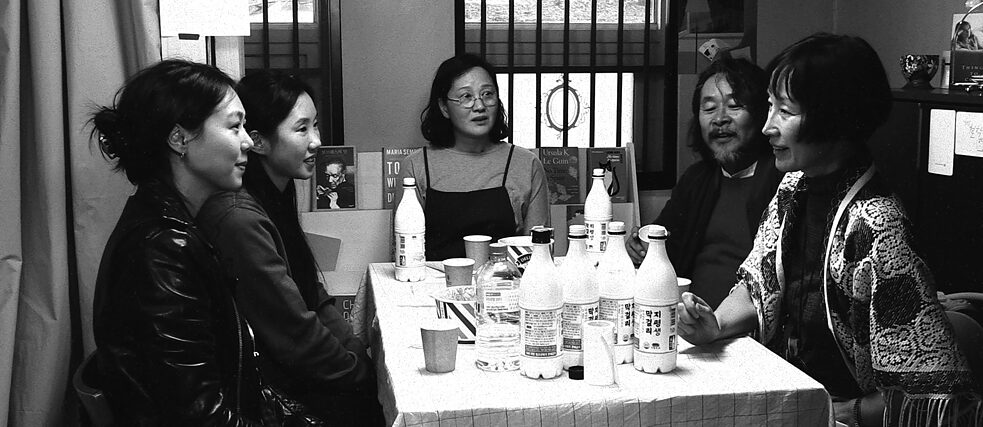Berlinale Bloggers 2022
“What kind of a film would our story make?”

Korean director Hong Sangsoo won the Silver Bear Grand Jury Prize at the 72nd Berlin International Film Festival, with “The Novelist’s Film”. Hong Sangsoo’s experimentation with new film techniques left the cinema audience spellbound – and it wasn’t just because of his cinematic approach.
By Hyejin Lee
Hong Sangsoo is known more than anything for capturing scenes from everyday life in his films. So the people wearing face coverings and cinemas that aren’t full to capacity because of social distancing in his new work, The Novelist’s Film, indicate that the film was made during the pandemic.
Junhee, a novelist, embarks on a visit to a small bookstore run by a younger colleague who has fallen out of touch. This initial meeting leads to others, and she happens to encounter actress Kilsoo on a walk. This gives Junhee the idea of collaborating with her to make her first short film. The author and the actress chat as they walk together – and finally all these chance encounters end up with a drinking session amongst friends in the bookshop where it all started. Junhee says that her film should be about something “she really likes” and is looking forward to the joint project with Kilsoo and her husband.
 The novelist Joonhee's chance encounters have all gathered back in the bookshop and are drinking together. | Photo (detail): © Jeonwonsa Film Co. Production
The novelist Joonhee's chance encounters have all gathered back in the bookshop and are drinking together. | Photo (detail): © Jeonwonsa Film Co. Production
FILM-WITHIN-A-FILM
In the starring role of Junhee’s film, Kilsoo appears in extremely intimate camera angles that aren’t seen in the storyline outside the film-within-a-film. With the voice of Kilsoo’s husband behind the camera, the space occupied by the film spills out into the auditorium, and we see colour that wasn’t present in the monochrome reality of The Novelist’s Film. Viewers now find themselves between Kilsoo and her husband – who is outside the screen that is invisible even though it exists. The subsequent takes are dominated by the eyes of a breathtakingly beautiful, innocent woman in love, with the camera reacting to and interacting with these eyes. The audience, who are transported into the story-within-a-story in a matter of moments, are often unsure whether they’re watching a scene staged within the film or a depiction of the film’s reality, whether Kilsoo is playing Kim Minhee in Junhee’s film – or Kim Minhee is playing Kilsoo.And as the closing credits start to roll, Kilsoo – as the viewer in the film – along with the audience – in reality – are placed back where we were before, just as if nothing had ever happened. The director offers us some fantastic moments in the subplot of the “film-within-a-film” with his subtle and affectionate camerawork and a low-res aesthetic in which the audiences’ boundaries of “here and now” are blurred. Hong Sangsoo, who always works with the same team to present his characteristic stories time after time, now seems to have found just the right creative collaborators and tightened up his cinematic language even more. His narrative style brings together a complex heritage in which reality and a reflective dramatisation are intertwined with each other. It’s up to the audience to decide how to receive this heritage.